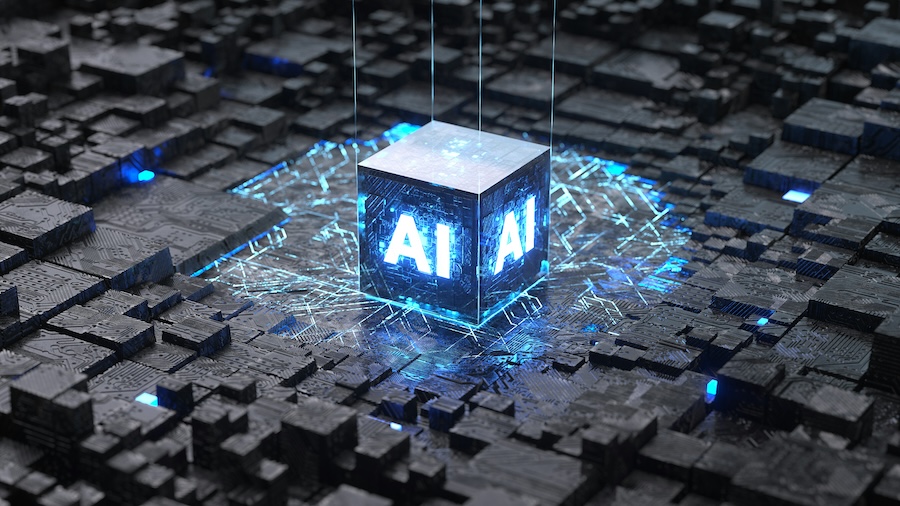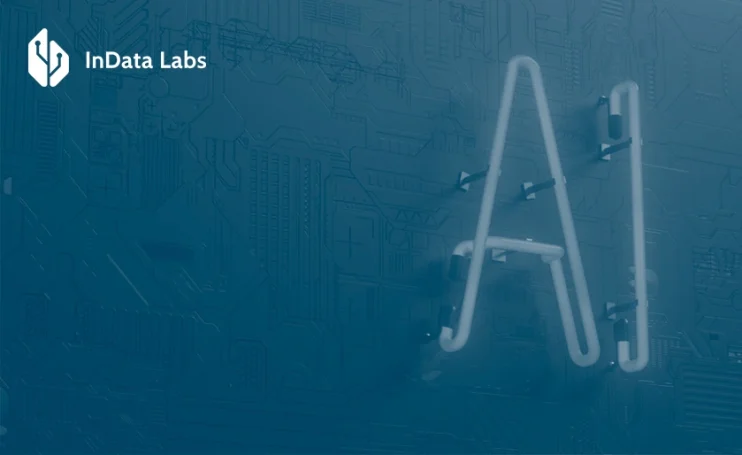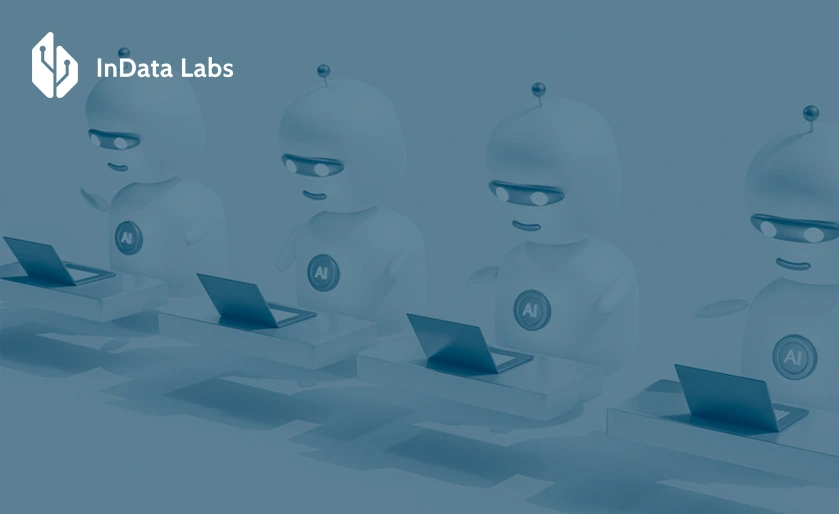With the 21st century came a rush of technological advancements that thoroughly revamped the way businesses operate, fueling remarkable efficiency gains, triggering inventive breakthroughs, and opening doors to previously unseen market intelligence. Business success is no longer about being better – it’s about being faster, smarter, and more agile.
Artificial Intelligence is the turbocharger that helps companies achieve just that, propelling them forward in today’s digitally driven marketplace. Think of AI as the super sleuth of data analysis, ferreting out insights from petabytes of information, iterating on its prediction models, and making lightning-fast decisions that propel businesses forward. No sector is immune to its charms, and neither should you be.

Source: Unsplash
Businesses can no longer afford to overlook the immense potential of AI; the stakes are simply too high. With technologies evolving at a breakneck pace, companies that fail to incorporate AI into their strategic roadmap risk being outmaneuvered by more technologically adept competitors. When businesses bring AI into the fold, they create a domino effect of excellence: optimized processes, radiant customer satisfaction, and strategic decisions that yield tangible results – a shining paradigm of modern business acumen.
AI business capabilities: What to know
Business leaders, get ready to unlock the full potential of AI. We’re about to dissect the top 10 AI capabilities that can revolutionize your operations and strategy. “What if technology could amplify human potential? By harnessing machine learning and Artificial General Intelligence, we’re poised to unlock exponential growth, streamlined operations, and trailblazing innovations.”
Step into the AI world and discover how each capability can supercharge your business. Through straightforward explanations, relatable case studies, and motivational stories of AI trailblazers, you’ll get the lowdown on what works – and what doesn’t.
AI capability 1: Machine learning
Machine Learning (ML), a subset of AI, has surged to the forefront of business innovation, offering tools that can parse, learn, and predict from the data they are fed. Think of it as having a superpowered assistant that can absorb mountains of data, anticipate customer needs, and steer companies clear of costly missteps. At its core, ML leverages algorithms to analyze data, learn from its patterns or features, and make informed decisions or predictions without being explicitly programmed for the task.
Businesses face a_machine learning-led seismic shift, as the technology rewrites the rules of their operations. Retail giants can use ML for inventory forecasting, predicting precisely which products will surge in demand. To outsmart fraudsters, financial institutions turn to machine learning algorithms that analyze transactions in real-time, delivering ironclad security and iron-ing out customer concerns. Companies savvy about staying ahead of the curve use machine learning to craft content and offers that resonate with individual tastes, watching engagement and conversion rates soar as a result.
Example: A notable case of ML in business is Netflix’s recommendation engine, powered by complex ML algorithms. Getting to know you is this system’s top priority. It scans your viewing patterns, preferences, and behaviors to serve up TV and movie suggestions that resonate with your unique tastes. This application is a shining example of machine learning’s potential to revolutionize customer service and simultaneously fuel business growth and loyalty.

Source: Unsplash
AI capability 2: Natural language processing (NLP)
At the intersection of computer science and linguistics lies Natural language processing (NLP), an AI capability that enables computers to understand, interpret, and generate human language. In the rapid-fire world of digital communication, customer interactions, and content creation happen at an incredible pace.
NLP is the ace up the sleeve, letting businesses tackle these tasks with remarkable efficiency. NLP is being used in innovative ways to revamp customer communication – think conversational chatbots that are always available and analyses of customer feedback that uncover hidden patterns and trends.
What many people don’t realize is that NLP goes far beyond just automating customer service tasks. For instance, it can help businesses get a pulse on public sentiment by analyzing social media chatter and customer reviews to see what people are really saying about their brand or products. Flipping the customer complaint paradigm on its head, companies can seize the initiative and redefine their brand narrative, often turning a negative into a major PR win. With NLP, the bottleneck of content creation disappears. Businesses can now churn out high-quality reports, articles, and product descriptions at an unprecedented scale, shaving precious hours and resources off their content production.
Success story: A prominent example of NLP in action is the deployment of AI chatbots by banks and financial institutions to automate customer service interactions. Bank of America’s chatbot, Erica, cranks out millions of responses every month, answering everything from “What’s my balance?” to “Can I pay my credit card bill online?” – all with a personal touch. By streamlining operations, we create a win-win situation: our internal processes run smoothly, and customers get the help they need 24/7.
AI capability 3: Robotics process automation (RPA)
Robotics Process Automation (RPA) represents a leap in business process automation technology. Unlike traditional automation, which requires programming to integrate with systems’ APIs, RPA tools operate at the user interface level, mimicking the actions a human user would perform. RPA takes the reins, effortlessly switching between software environments and freeing up valuable time by automating mind-numbing, rules-based tasks.
Think back-office operations, and RPA is likely to be involved, managing tasks like data entry, invoice processing, and HR administration with precision and speed. Imagine diverting the focus of your best minds away from routine tasks and onto game-changing initiatives. That’s precisely what happens when you automate tedious work. Human inconsistency has become a thing of the past with RPA, which accurately handles tasks and keeps processes streamlined and reliable.

Source: Unsplash
Example: In the realm of insurance, Zurich Insurance Group harnessed RPA to streamline its policy processing, achieving a remarkable 80% reduction in manual tasks. A shortcut to a faster, more precise process meant employees could bid farewell to tedious tasks and say hello to more stimulating work that lit a fire under them. Job satisfaction soared, and so did the accuracy of their work.
AI capability 4: Computer vision
Computer Vision, one of the most thrilling advancements in AI, involves enabling computers to interpret and understand the visual world much like humans do. What if you could tap into the hidden patterns and trends hidden within visual data? Computer vision makes it possible, empowering businesses to gain a competitive edge, reduce risks, and uncover new opportunities that might have otherwise gone unnoticed. Who knew the clever eye of computer vision could transform both the way we make things and the way we shop? From goods inspected with precision to captivating in-store experiences, the impact is clear.
In manufacturing, the eagle-eyed computer vision systems act as quality control patrols, scrutinizing products for defects before they hit the market. One major perk of quality control is the significant savings it brings. By avoiding recalls and returns, companies can redirect those funds to more productive pursuits. Imagine walking into a store where mirrors display virtual outfits and products come to life through augmented reality. This futuristic scenario is becoming a reality, thanks to computer vision technology that creates memorable, personalized experiences and boosts customer loyalty.
The proof is in the numbers: A real-life example in Amazon Go stores, advanced computer vision, smart sensors, and cutting-edge deep learning come together in a shopping revolution. Customers at Amazon Go can walk into the store, pick up the items they need, and leave without physically checking out. Computer vision systems identify the items taken and charge them to the customer’s Amazon account. What if shopping could be as efficient as it is enjoyable? By merging innovative tech with personalized service, retailers can raise the bar for customer satisfaction.
AI capability 5: Artificial general intelligence (AGI)
Artificial General Intelligence (AGI), often referred to as “Strong AI,” is the conceptual future of AI where machines can perform any intellectual task that a human being can.
Unlike specific AI technologies, which are designed to excel in particular tasks, AGI would possess a more holistic and adaptable intelligence. Imagine solving the intricate, headache-inducing problems that have stumped current AI systems – that’s the promise of AGI, which, although still largely theoretical, holds enormous potential for businesses and economies.

Source: Unsplash
While the realization of AGI might still be a few decades away, its prospective capabilities urge business leaders to keep abreast of developments in this area. Imagine industries transforming overnight as AGI arrives, bringing game-changing analytical firepower, advanced problem-cracking capabilities, and a dash of creative spark to radically redraw the competitive landscape.
Theoretical foundations are formed when we start to flesh out our concepts. What if researchers could simulate the outcomes of millions of drug interactions in a matter of minutes? AGI makes this possible, helping pharmaceutical companies prioritize the most promising compounds and shave years off the development timeline. This would not only cut down time and costs significantly but also lead to more innovative treatments being available sooner.
AI Capability 6: Speech recognition
Speech recognition technology has become increasingly sophisticated, with applications expanding beyond simple voice commands to complex, dialogue-capable systems. Computer systems can now decipher spoken words, transforming them into readable text or executing commands with ease. The fusion of technology and everyday life relies heavily on speech recognition, the unsung hero of seamless user interactions and unhindered accessibility.
Picture this: having an extra set of hands to tackle tasks like scheduling meetings and responding to emails, all with just the sound of your voice. Or being able to sift through recordings of meetings and customer calls to pinpoint key takeaways. That’s what speech recognition technology can do. With IoT devices, you’re just a voice command away from transforming your space into the perfect haven – effortlessly adjusting the lighting, temperature, and more.

Source: Unsplash
Case: The impact of speech recognition: An example of effective use of speech recognition is seen in the healthcare sector, where providers use it to dictate notes and patient interactions, thus reducing administrative burden and allowing more time for patient care. Think of it this way: when patient records are complete and accurate, doctors and nurses can focus on healing, not scrambling to track down critical information. The result? Better health outcomes all around.
AI Capability 7: Predictive analytics
Predictive analytics utilizes a variety of statistical techniques, such as data mining and machine learning, to analyze current and historical facts to make predictions about future or otherwise unknown events. Industries like retail, banking, and healthcare harness predictive analytics to forecast trends, understand customer behavior, and optimize operations.
Retailers, for example, predict inventory needs and personalize marketing campaigns based on predictive models that analyze past purchase behavior, seasonal trends, and other relevant factors.
Impact in action: Financial institutions leverage predictive analytics to assess credit risk, detect potential fraudulent behavior, and tailor investment strategies to individual climatic profiles.
AI Capability 8: Neural networks and deep learning
Neural networks and deep learning form the backbone of many advanced AI systems. Inspired by the structure and function of the human brain, neural networks comprise layers of interconnected nodes that simulate the way neurons interact. It’s no wonder these structures excel at image and speech recognition – tasks where traditional methods falter and stumble.
Here’s the magic of deep learning: these neural networks, stacked like a layer cake, interpret huge datasets with eerie precision. Just imagine video and image files, smoothly decoded and rendered useful. Google Photos uses deep learning for image recognition, categorizing photos based on the people and objects they contain and even allowing users to search images by keywords like “beach” or “birthday.”
Highlight: Tesla’s autonomous vehicles leverage deep learning for their advanced driver-assistance systems (ADAS), enabling the car to make real-time decisions based on visual data from the vehicle’s cameras. Imagine hitting the open road with unprecedented peace of mind. This technology fusion achieves exactly that, all while propelling autonomous driving forward at breakneck speed.
AI Capability 9: Reinforcement learning
Reinforcement learning involves an algorithm, or “agent,” learning to make decisions by taking actions within an environment to maximize some notion of cumulative reward. Think gaming intensity, robotic precision, and forward-thinking business strategies – that’s where these capabilities truly come alive, propelling breakthroughs in multipart decision-making, agile pricing, and optimized supply chains.
Game-changing breakthroughs in AI research often spring from unexpected sources – like the DeepMind team’s daring challenge to a world-class Go player, ultimately upending the leaderboard. For online retailers, staying ahead of the competition means responding swiftly to shifting market conditions. That’s where reinforcement learning comes in – by fine-tuning prices in real-time, they can strike the perfect balance between profitability and affordability.

Source: Unsplash
Impactful deployment: Logistics companies now implement reinforcement learning to configure their delivery routes and schedules dynamically, reducing delivery times and costs. When traffic slows down, this application kicks into high gear, adjusting on the fly to keep your operations humming and customers smiling.
With AI’s constant iteration, the fallout will be twofold: companies will experience enhanced productivity and precision, but the realignment of job roles and industry benchmarks is an inevitable byproduct. In today’s AI-driven landscape, adaptability is the ultimate game-changer. Companies and professionals who fail to stay informed will get left behind, while those who are willing to learn and adapt will reap the rewards.
AI Capability 10: Video conferencing API
AI-powered video conferencing APIs represent a transformative capability for businesses, leveraging AI to enhance and customize virtual meeting experiences. Video conferencing APIs integrate advanced features into your businesses’ website, such as real-time translation, speech-to-text transcription, participant attention monitoring, and even emotional sentiment analysis, all aimed at streamlining communication and making it more effective regardless of the geographical and language barriers.
- Innovative interaction: Imagine hosting a global virtual meeting where each participant receives real-time translations of the discussion in their native language, ensuring everyone is fully engaged and contributing effectively. AI-powered APIs can process audio and visual cues to offer instant subtitles, making conversations accessible to a diverse audience and enhancing understanding among participants.
- Enhanced engagement: AI algorithms can analyze video feeds to gauge participant engagement through attention tracking and sentiment analysis. This feedback allows presenters to adjust their delivery or content in real time, ensuring messages are well received and understood. Moreover, it can provide valuable insights for training and development purposes, helping speakers improve their communication skills over time.
- Efficiency and accessibility: By converting speech to text, these APIs create meeting transcripts, making it easier for attendees to search for specific discussion points, review meeting content, or catch up on missed meetings. For businesses, this means improved productivity, as well as enhanced compliance and record-keeping practices.
Embracing AI for business: Here’s how to get started
Embracing AI in your business is all about working smarter, not harder. It’s about augmenting human ingenuity with machine intelligence to drive meaningful insights, unlock new markets, and, ultimately, future-proof your organization.

Identifying the right AI capabilities
- Assess your needs: Where are the breakpoints in your business where AI can spark the most significant improvement?
- Match solutions to problems: Research AI capabilities that align with your identified needs, keeping in mind your sector’s unique requirements.
- Pilot programs: Start with small-scale projects to test the feasibility and effectiveness of AI solutions in addressing your business needs.
Challenges and solutions
- Data privacy and security: Never take data security for granted. Safeguard your sensitive information by implementing a robust cybersecurity strategy that meets regulatory requirements head-on.
- Integration with existing systems: Choose AI solutions that can seamlessly integrate with your current infrastructure or be prepared for some level of system overhaul.
- Talent acquisition and training: Invest in training for your current workforce and consider hiring AI specialists when necessary.
Best practices for AI adoption
- Stay informed about AI advancements relevant to your industry.
- Foster an AI-friendly culture that embraces innovation and continuous learning.
- Find vendors and consultants who truly get your business goals and can craft AI solutions that fit your needs like a glove.
Measuring the impact of AI: Metrics and KPIs
- Performance improvement: Track efficiency gains, error reduction, and productivity increases.
- Customer satisfaction: Monitor changes in customer engagement, retention rates, and feedback.
- ROI of AI projects: Assess the financial impact compared to the investment in AI technologies.
Benefits of AI for business
New ideas aren’t just about looking forward – they’re about embracing a mindset that constantly questions and improves the status quo. What if you could generate new revenue streams simply by harnessing the power of AI? This technology allows companies to develop pioneering products and services.
Flexibility is more than just a buzzword—it’s the art of adapting to the unexpected, pushing beyond what’s comfortable, and finding creative solutions to the toughest challenges. Fast-paced markets and evolving customer needs require businesses to be agile, and AI-driven insights can help them stay nimble and responsive.
Competitive advantage: Leveraging AI can differentiate your offerings and improve your market position.
Continuous learning and adaptation
- Stay flexible: As your business evolves, so should your AI strategies – adapt and adjust to stay ahead of the curve.
- To stay current, prioritize ongoing education for your team – it’s the best way to keep pace with rapid AI developments.
- To take your AI initiatives to the next level, make it a habit to gather feedback and act on it – you’ll be surprised at how much you can improve.
Conclusion
Let’s distill the essence of our conversation so far. As we bring this chapter to a close, it’s essential to recognize the core insights that emerged.
AI promises to propel businesses into the fast lane, allowing them to hack away inefficiencies, supercharge innovation, and reach new heights of success – ready or not, the future is here. Picture a company where everything runs smoothly, customers are thrilled, and the competition is left in the dust. This isn’t just a fantasy – it’s a reality that companies can achieve when they tap into the power of AI solutions tailored to their unique strengths and weaknesses.
The expanding landscape of AI presents us with unprecedented opportunities to reshape entire industries. Businesses that explore and invest in AI now will not only reap immediate benefits but also position themselves strongly for the future. In today’s fast-paced digital landscape, hanging onto competitiveness hinges on embracing the latest AI advancements head-on.
It’s not just about launching AI initiatives; it’s about doing it right – by balancing technological advancements with moral obligation and a long-game strategy. Imagine a future where businesses thrive by harnessing the collective power of human ingenuity and AI capabilities. This isn’t a distant dream – it’s a tangible reality that emerges when companies adopt a forward-thinking approach, staying nimble in the face of emerging trends and committed to continuous learning and growth.



